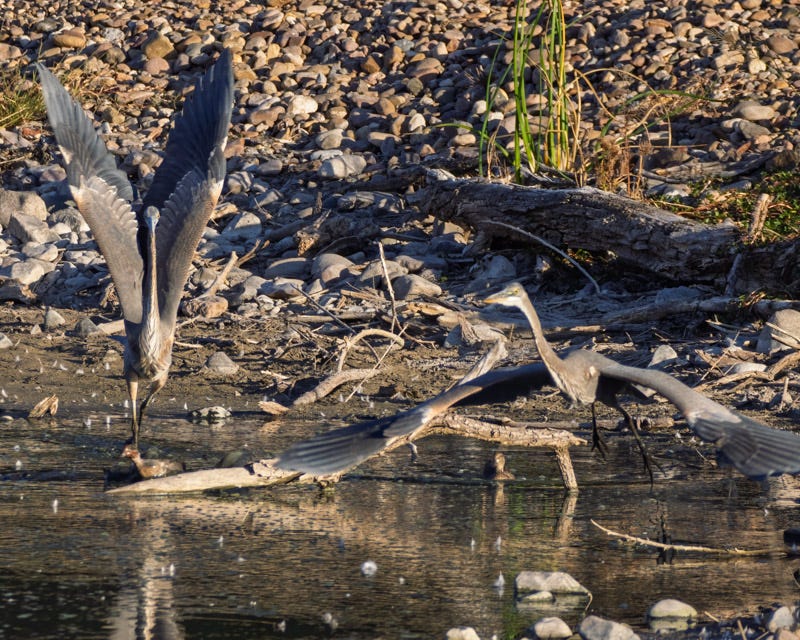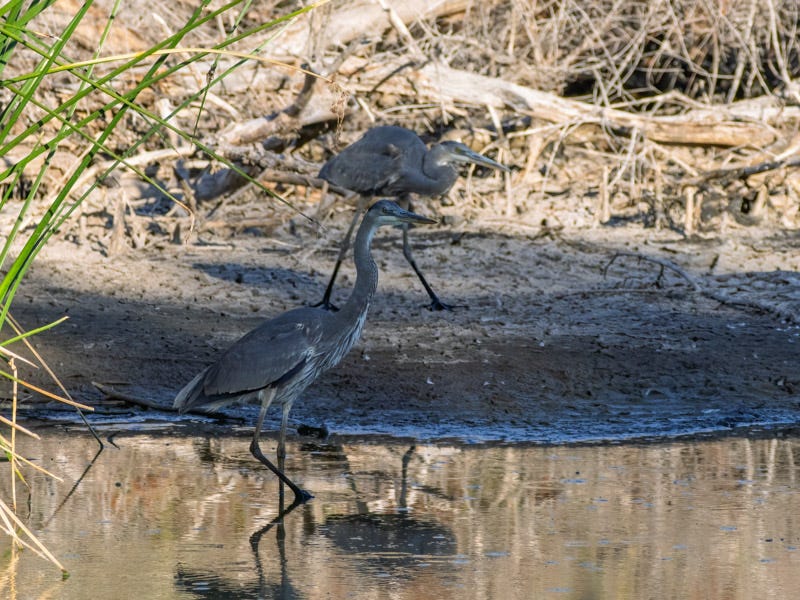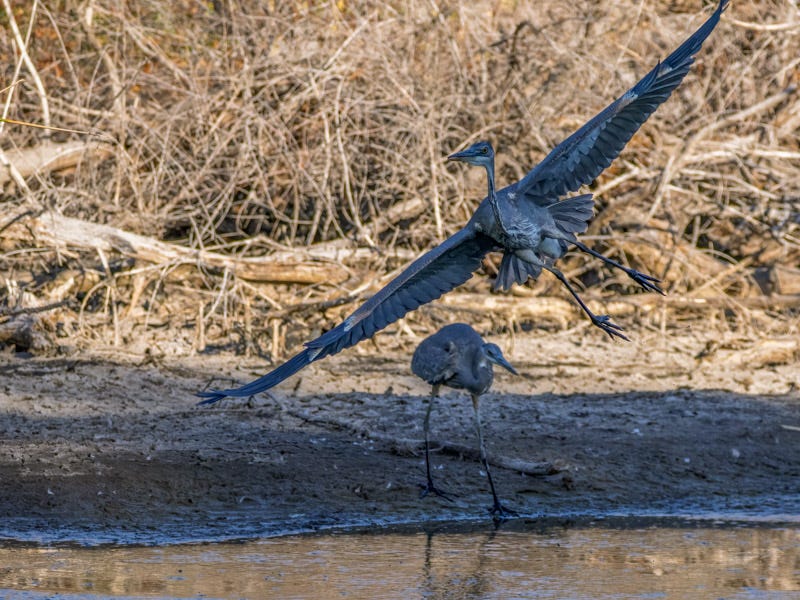It's Not a Rivalry, It's a Dispute of Territory
One Heron Refused to Share Resources
There are different reasons for territorial disputes among birds. Those may include nest defense, interspecies conflict, or reproduction. Birds can also aggressively claim a territory because the area contains resources that are in short supply. That seemed to be the case for one Great Blue Heron at El Rio Preserve. I’ve shared photos of this bird acting aggressively towards a Great Egret and towards another Great Blue Heron. Below, the Great Blue is stepping assertively towards the less dominant Great Blue. Both Great Blue Herons were the same size.
We watched the dominant Heron (I’ll refer to it as Heron #1) continue to harass the second Heron repeatedly. Shortly after having chased the less dominant bird out of the water, the dominant Great Blue Heron walked away allowing the less dominant bird to return to the water. Apparently the dominant bird was not happy. It slowly stepped towards the second bird. Once it got close enough, the weaker bird took flight as the dominant bird raised its wings into the air.
Heron #1 raised its wings to chase Heron #2 away. Heron #2 never ‘fought’ back or defended its place. It understood it was the weaker bird. With the water levels receding dramatically at the Preserve, the fishing holes were just about all gone. Great Blue Heron #1 wanted to be sure that it was the only one to access the remaining fish.
Heron #1 didn’t even need to fly or come close to Heron #2. It had established its dominance through visual displays and, while we were watching, never needed to resort to any physical contact. There may have been some vocalizations but we heard none. Heron #2 understood the threat and quickly flew away. Notice how the ducks are just minding their own business. Those ducks do not feed on fish so they are not competitors to the Herons.
Yet, just to make sure the threat was understood, once Heron #2 landed far away Great Blue Heron #1 did finally take to the air. Usually a Great Blue Heron will fly with its neck in a tight “S” shape. The flight below is more of an attack flight, chasing the other bird with its sharp bill leading the attack.
Eventually Great Blue Heron #2 found some peace and quiet hidden behind a large reed patch. This area was away from the remaining pond in an area that I referred to as the ‘canal’ due to its long narrow shape.
It only had a few moments of peace before the dominant Great Blue Heron slowly crept near. The less dominant Heron was alert and watched every move of the dominant bird.
Once again, the dominant bird didn’t need to attack. Just turning and facing the second bird was enough of a threat to make the less dominant bird take off.
The Great Blue Heron flew out of the shade into the sunlight.
Territoriality requires energy. The aggressive Heron worked hard to protect what it felt was its territory. With diminishing supplies, it was worth the effort for the dominant Great Blue Heron. Having to share the reduced resources would have been costly for the Great Blue so defending its territory was well worth it. For Mother Nature, survival is a constant struggle











"For Mother Nature, survival is a constant struggle" - same is true for much of human nature...
Great series.
Drama!